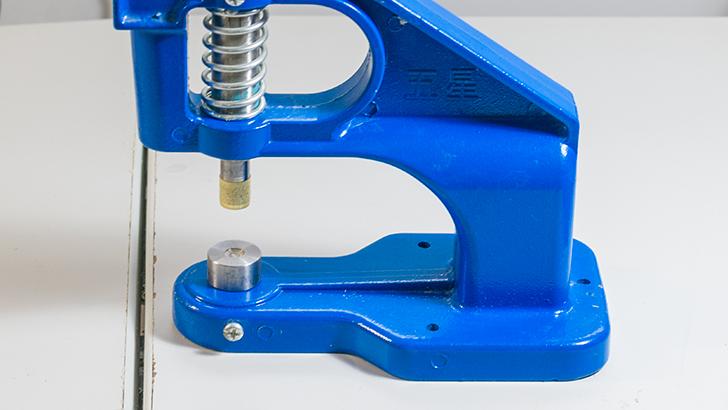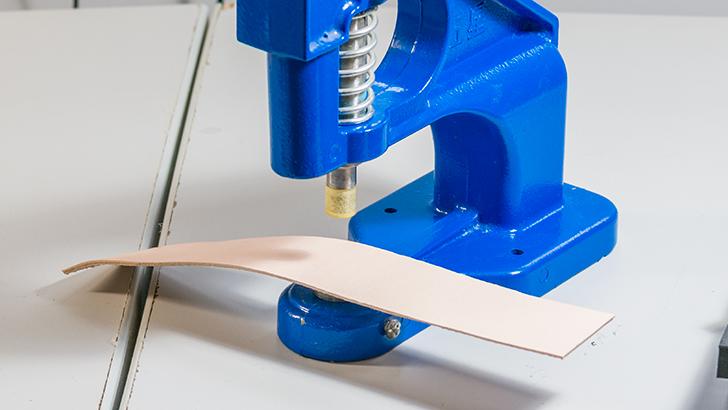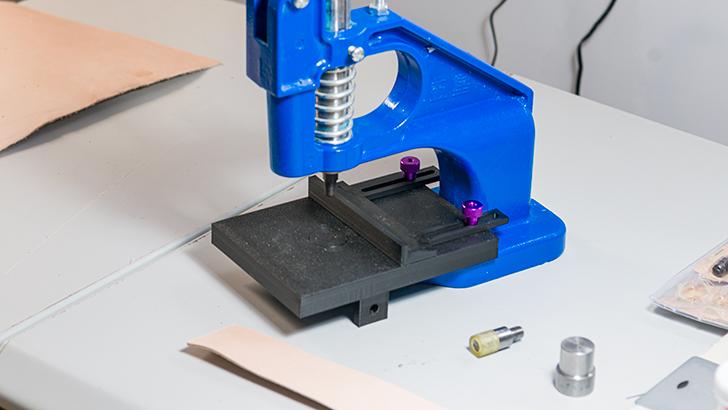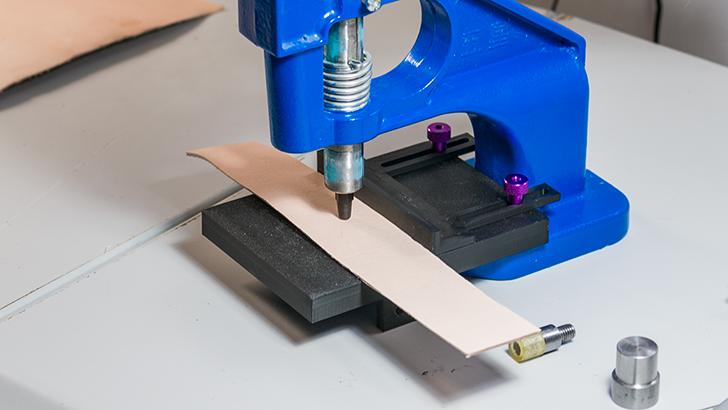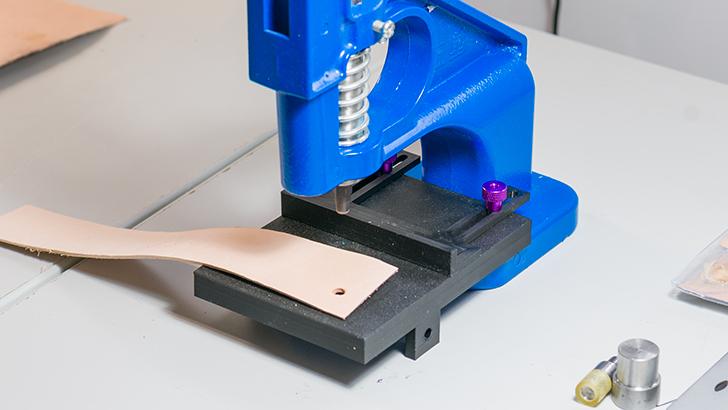
kgg
Contributing Member-
Posts
3,308 -
Joined
-
Last visited
Content Type
Profiles
Forums
Events
Blogs
Gallery
Everything posted by kgg
-
Here is the manual for the Singer Class 7 and should answer your questions. Also here is a link a cross reference of needle size to thread size ( https://www.tolindsewmach.com/thread-chart.html ) class_7_one_needle_lock_stitch.pdf
-
I think you maybe disappointed with that machine. That machine appears to be: i) sort of a Juki DU-1181n clone, ii) just a walking foot (presser foot , feed dog) not a compound feed (needle, presser foot, feed dog), iii) can handle up to 1/4" max thickness, iv) limited to small max thread size of V92 (one size up from domestic thread), v) can handle a max needle size of 135 X 16 size #22 (140 metric), vi) smaller bobbin then Juki du-1181n vii) low presser foot lift of 10mm viii) Weaver rates this machine as a LIGHT duty machine. I own a Juki DU-1181N and it is a light duty walking foot machine made more for fabric. I think you really need at least a Juki DNU-1541S or clone if you want to do belts and knife sheaths. kgg
-
Best affordable sewing machine for leather 5/8”- 3/4”
kgg replied to lilbax's topic in Leather Sewing Machines
In my opinion both those machines you listed are upholstery class machines with one being a cylinder arm machine (the Cobra) and the other a flatbed machine. Neither will do the job properly if at all as both are rated for less then what thickness you want to sew. That leaves you needing the punching power of a class 441 machine. If you want a manual machine (one arm bandit) you will need a machine like the Tippmann Bose, Cowboy Outlaw or the Weaver Cub. If want a motorized class 441 you will need something like the short arm Cowboy 3200 or the short arm Cobra Class 3. What is your budget????? kgg- 4 replies
-
- thick leather
- fire shields
-
(and 1 more)
Tagged with:
-
Presser Foot Thumb Screw (Thread Size/ Screw Tap?)
kgg replied to shoemaker4's topic in Leather Sewing Machines
If it is a Singer don't be surprised at not finding a tap as Singer and some Juki's had their own specific custom thread. kgg -
things to look for when buying a used machine?
kgg replied to maggielj's topic in Leather Sewing Machines
The machine head is going to be heavy expect it to be in the 110 + pounds range. You will need the second set of hands for lifting or moving it. I would: i) use your truck bed for the pedestal stand down laying it on it's side on a piece of thick styrofoam covered with some heavy moving blankets and strapped / tied down. ii) the head is going to be nose heavy and definitely well want to fall forward nose first. So I think the best way to transport it is with it strapped down securely on it's side in the cab on the seat or strapped securely in place stood up in the cab with the nose supported with styrofoam. Best of luck, kgg -
The circled part in photo #2. kgg
-
I would send back the motor for a refund as the cover has damaged the bearing face as can be seen in your photo's. I would not accept a replacement as there is a problem with their cover mold and you are more then likely just going to have the same problem. The problem with keeping that motor is it will never run true and is going to fail, when who knows. kgg
-
It's the simple stuff that can get you everytime. kgg
-
A good source for needles and thread I find would be Wawak.com and I prefer the Schmetz Needles whether for fabric or leather. A good article with a photo's of some of the various needle points and what your stitching will look like can be found at https://www.sailrite.com/leather-sewing-machine-needle-types I would recommend changing your needle frequently. Needles and thread are least expensive part of a project. I change my needle after 8 hours of use, when I think it is getting dull, having a stitching problem, been a while since I used the machine last, before starting a new project which ever comes first. kgg
-
You can probably buy it off one of the reservations just like smokes and gas. kgg
-
I am not familiar with the bonded thread but BNT69 indicates it is Bonded Nylon Thread in size V69 thread which is the same as Tex 70. The polyester thread size has do with how much weight there is in 1000 meters and in this case 75 grams. Some things to remember: i) Buy good quality thread made in North America like A&E thread (made in Canada and USA) but stay away from Chinese made non name thread particularly the 8 oz spools. ii) Items that are going to be exposed to the outdoors or to bleach Bonded Polyester Thread will stand up better then Bonded Nylon thread. iii) The V69 (Tex 70) thread is the "strong thread" is the thickest thread that the domestic sewing machines can handle and is really the bottom end size / strength wise used in industrial sewing machines. Some industrial sewing machines really don't like trying to use V69. Your machines is rated to V69 to V138 thread and probably would prefer V92 as the smallest size of thread. iv) The strength of V69 is 11 lb, V92 is 14.5 lb, V138 is 22 lb v) When sewing leather with your machine use 135 X 16 with the correct size of needle for the size of thread you are using (leather needles cut through the fibers of leather) and 135 X 17 for fabric with the correct size of needle for the size of thread you are using (fabric needles push apart the fibers of fabric). vi) A good reference chart for thread size to needle size can be found at: https://www.tolindsewmach.com/thread-chart.html vii) Your machine should be able to sew close to 3/8" of material under the presser foot depending on the toughness of the material. viii) If your machine came with a clutch motor change it out with a servo motor to get greatly improved sewing speed control. kgg
-
Leather Sap 8.5" impact device, Slapjacks, sap, blackjack, Paper weight
kgg replied to Adonis's topic in Show Off!!
Growing up the guys of the Royal Newfoundland Constabulary who walked a bet use to carry a Billy Knocker as well as a slap. The dirt bags use to make what we called Black Jacks by running 3/8 chain through a 4 inch length of copper pipe that was filled with lead and attaching it to another 4 inch of copper pipe also lead filled to form a "T". The Black Jacks could be used as a slap or held in the palm the same way a roll pennies could be used. I don't know which I would rather be on the receiving end, one good strike and it's lights out. We that said if you are defending oneself I still think it would be better to be judged by twelve then carried by six. kgg -
There is a fair bit of info here on the site for the Econosew machines just type in "Econosew" in the search box and go down through some of the posts. Here is an example of what one user found with their Econosew 1541S bobbin case / hook assembly. kgg
-
Leather Sap 8.5" impact device, Slapjacks, sap, blackjack, Paper weight
kgg replied to Adonis's topic in Show Off!!
These depend on the laws of the Country/ State or Province and maybe illegal no matter how they are dressed up to look like or function as something else. Check your laws before carrying one. The best is an improvised weapon like a good old fashion H2 pencil. kgg -
Leather Sap 8.5" impact device, Slapjacks, sap, blackjack, Paper weight
kgg replied to Adonis's topic in Show Off!!
That should leave a reminder particularly if the boot had a metal heel plate. kgg -
Thank you. I don't know of any but it shouldn't be that hard to make something decent up. Drop me a PM. kgg
-
Should be fairly simple to design and print one for your press. kgg
-
Thank you. You known no machine is complete without a 3D printed accessory. Thank you. What kind of press did you have? kgg
-
The common cheap Chinese hand presses ($60 CAD delivered) are normally used for installing cap rivets, button snaps and grommets. I hate a machine that basically does one function that isn't that convenient to use. So here is what I have attempted to do. i) improve the hand press operation by adding a work surface that is level with the steel block to provide a larger flat work surface, 4" (101mm) verses the little over 3/4" steel block surface. ii) add more stability to the hand punch press ii) add an adjustable straight edge fence to accommodate items up to 4" (101mm)wide iii) add interchangeable hole punch blocks that would replace the steel block when hole punching iv) install hole punches for punching holes Photo 1 is of a typical hand press Photo 2 shows how little work area and how a piece of 3 oz veg tan rests on the steel block. Photo 3 shows the same machine with my work area and adjustable fence installed. Tightening of the steel block screw is accessed through a hole in the support foot. Photo 4 shows how the piece of 3 oz veg tan now rests on the work surface with the same steel block. Photo 5 shows the hand press setup to hole punch with a 4mm hole punch installed, the steel block removed and a smooth surface block installed Photo 6 shows the hand press with 3 oz veg tan Photo 7 shows the 4 mm hole punched in the 3 oz veg tan Any and all comments are always welcomed. kgg
-
I know what you mean about what you mean about being nervous with one printer as sometimes stuff happens. When my Prusa MK3 decided to pack it in on an overnight print that left us with the Prusa MK3 Bear while we waited and waited and waited for the new Prusia core XY to arrive. The new Prusia was going to be expensive $5000 + CAD by the time we would get it versus $2200 CAD to the door for the Bambu. We had good service from the Prusia printers but they have I think fallen behind in both the customer service and the tech end while commanding a premium price. The Prusa MK3 Bear is now the backup if needed. The time, at least for us, of getting some spare parts (belt, head,etc) just like the printer took three days. Doing mechanical adjustments or replacement is so simple in comparison to Prusia. This to gave me some concern but the Bambu P1P and the X1 Carbon are more like your fridge or toaster rather then the tinker machines of say just three years ago which required a fair bit of tweaking if you changed something. The P1P is the cheaper version of the X1 with a different controller, probably less capable and cheaper. A couple of features that I thought would be useless or not really necessary: i) the camera inside the cabinet. Who really needs see it printing a part? It turned out to be a nice feature as we could remotely see what it was doing during a recent tweaking session. The the printer is one part of the house and the computer is in another part. ii) the wifi connection. We were use to doing the design, slicing then transferring the file to a card and bringing the card to the printer. Now do the design, slice and send it to the printer. Buy the time we get to the printer it is warming the plate up to temperature and doing it's self checks. Should you decide to go with a Bambu P1P or X1 Carbon I would suggest using the ORCA slicer instead of the Bambu slicer as the ORCA has more fine grain tuning, better calibrations options and offers portable install option. kgg
-
It does come to a point where the cost to repair is just not feasible either because of time or cost. The repairs seem to become more of a stop gap but more importantly those new parts put extra stress on the old parts which causes them to fail in a short period of time. This time I went with a Bambu X1 Carbon with the AMS system. I've only had it about two weeks and have gone through about six 2kg spools. So far it is really working out nice. Setup was simple say an hour to get decent prints and then about six hours of tuning the software to get what I like. The Bambu has cut print times down considerably, 16 hour bed slinger prints now take about 5 hours in the standard speed mode. I probably could get down to 3 using the ludacris speed mode. The most cost effective way (time and material ) to produce @RockyAussie molds is with 3D printing and design changes can be made on the fly as needed. The beauty is that you set the 3D printer to print and walk away to do other things. Once the print is done, remove the print and hit start again. With the number and size of parts of his design he can do at least one complete mold and possibly two in one print run. Also the molds can be printing while he goes to have a bite to eat or sleeps. kgg
-
Have you checked the bobbin winder? I think your problem lies with the operation or how you are operating the bobbin winder and not related to the speed of the servo motor. The speed of winding your bobbin depends on the speed that the pulley belt from the motor to the hand-wheel rotates. The belt turns the wheel on the winder by friction when you push the winder lever forward and the wheel is pushed up against the pulley belt from the motor to the hand-wheel. If you have a belt guard installed to cover the bobbin winder and the pulley belt remove it. Check and see if the winder wheel is slipping or otherwise not engaged properly when you want to wind a bobbin. Also when winding a bobbin first remove the thread from the needle and raise the presser foot up. If you are winding a bobbin as you sew the winding of the bobbin is going to depend on how fast you sew. kgg
-
I would drop @RockyAussie a PM (private email). The problem you have is that you are right on the crossover point both in thread size and thickness of material. As far as doing curtains I am going to say it would be easier to do on a 341 class machine a feat to do on a 441 machine. The needles of the class 441 are going to be a lot thicker then the 135X17 needles. I think neither machine would be the right machine for a curtain type project. I would suggest picking up an old Singer Class 15 machine or a Juki 1181N walking foot machine for those types of projects. The problem with the Class 341, typically rated to sew 3/8" thick stuff, as I see it is that some clones suggest they can use V207 thread for both top and in the bobbin whereas Juki rates their machine (LS-341old / LS-1341 new) to sew with V138 at max thickness for top and bobbin thread. So if you want to use greater then V207 in thick items you need to move up to the Class 441 machines which use the much thicker 7x3 or 794 needles. Your problem then becomes do you get a stub nose cylinder arm 10.5" CB3200 typically rated to sew 1/2" thick stuff, a stub nose cylinder arm 9" CB3500 typically rated to sew 7/8" thick stuff or a standard cylinder arm 16" CB4500 typically rated to sew 7/8" thick stuff. The cost difference between those machines: i) CB3200 at $2200 USD, ii) CB3500 at $2700 USD, iii) CB4500 at $3000 USD. iv) CB341 will run about $2400 USD. All I can say is If you need or want a Class 441 machine for whatever reason and can afford it opt for the standard 16" cylinder arm. Before I bought my Class 441 I even looked at the one armed bandits but quickly decided they weren't for me. When I bought my Class 441 and I have a Class 341 as well I opted for the standard 16" cylinder arm. Also don't forget to take into account the style of table that would suit your typical sewing position, seating versus standing. kgg
-
What are you planning on sewing and with what size of thread? kgg


